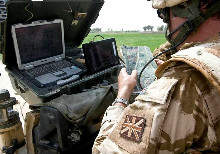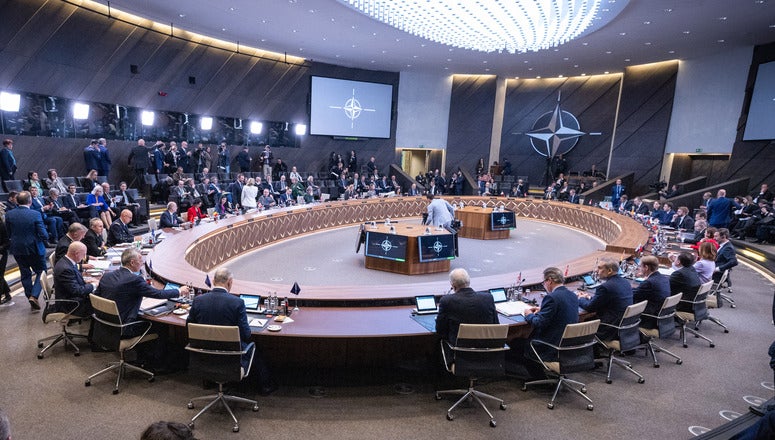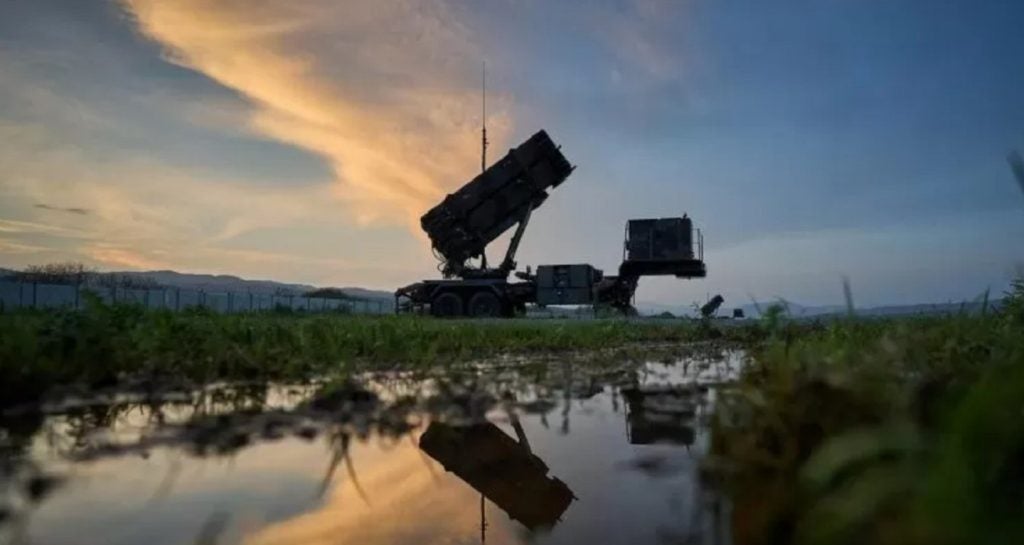
 Whether it's military intervention in the Middle East, helping flooded communities in England or supporting relief work in Sierra Leone, the UK's armed forces need to be deployed and operational at very short notice. However, establishing a conventional command and control centre into a deployed environment can be a lengthy, costly and unwieldy exercise that requires, among many other things, around 20km of internal fibre optic cabling and as many support staff as delivery personnel.
Whether it's military intervention in the Middle East, helping flooded communities in England or supporting relief work in Sierra Leone, the UK's armed forces need to be deployed and operational at very short notice. However, establishing a conventional command and control centre into a deployed environment can be a lengthy, costly and unwieldy exercise that requires, among many other things, around 20km of internal fibre optic cabling and as many support staff as delivery personnel.
An alternative 'smart' HQ, built around today's digital technologies, could reduce the time to set up and significantly slash the need for physical and human sustainment. A smart HQ is also geared to manage and make best use of every 'bearer of opportunity' available for data backhaul, whether military or civilian satellite, fixed bearers or mobile 3G/4G/LTE. Most importantly, a smart HQ could also give field commanders the collaborative tools, real-time information and agility they need to direct operations under significant time pressure.
Comprised of thousands of pounds' worth of cabling and wiring, plus computing resource, power supplies and critical life support services, a traditional deployed HQ can take many days and many hands to set up. Once established it is difficult to move. The logistics footprint is complex to sustain: Everyone involved in setting up and running the site must be transported, protected, fed, accommodated, and so on. Consequently, reducing the number of people required to establish and sustain the HQ creates a logistics saving and/or the opportunity to transport more military capability with the same air or sea lift. And in a hostile environment, the fewer people deployed, the fewer people are in harm's way.
Tapping into SME innovation
The Ministry of Defence's (MoD) 'Whole Force' approach seeks to maximise human capabilities, whether that be a mix of service personnel, civilian employees or external contractors. In addition, the government and the MoD are keen to engage the fresh thinking of small and medium-sized enterprises (SMEs) and enable them to access UK public procurement opportunities.
Recognising that the MoD does not have the resources to manage a multitude of smaller engagements, BT has opened the way for more SMEs to contribute innovation and ideas. In an innovative programme that is the first of its kind, under the umbrella integration of BT and its technology partners, ten to twelve SMEs are working with the MoD to test the concept of a smart deployed HQ, including pureLiFi and Antillion.
See Also:
The smart deployed HQ applies digital technologies (some of which are not yet widely available outside the R&D environment) and workstyles that have been proven to help large organisations to be more efficient, productive and agile. For example, Wi-Fi and mobile devices liberate people from their desks so they can have face-to-face meetings with colleagues, review information and disseminate actions immediately. Smart/wireless charging across the site means that HQ staff don't even need to return to their desks when a laptop battery runs low.
How well do you really know your competitors?
Access the most comprehensive Company Profiles on the market, powered by GlobalData. Save hours of research. Gain competitive edge.

Thank you!
Your download email will arrive shortly
Not ready to buy yet? Download a free sample
We are confident about the unique quality of our Company Profiles. However, we want you to make the most beneficial decision for your business, so we offer a free sample that you can download by submitting the below form
By GlobalDataFilms such as The Minority Report paint a picture of an immersive, hyper-realistic way of presenting, manipulating and acting on information. The scenario is not so far-fetched. With advanced collaboration tools that collect and present fast moving, complex information streams (from air, sea, land, intelligence, logistics) on big flat screens, field commanders can develop a much better shared understanding of live situations (a 'single version of the same truth') and interact with ground personnel. And no more note taking – every event, every decision is digitally recorded.
High security and privacy is of course paramount. Li-Fi, which uses the visible light spectrum instead of radio frequencies for high-speed wireless data communication, offers substantially greater security and safety, as well as helping to reduce infrastructure complexity and energy consumption. Mobile encryption technology allows sensitive data to be transmitted over the internet. Using the cloud for data storage and processing means that the end user device is completely dumb; the user only works with cloud data and services.
A non-commercial test of concept
The smart HQ pilot is a non-commercial exercise to demonstrate ideas, concepts and technologies, either ready now, or deliverable within five years. A further live test with the MoD in the summer will seek to understand more about how a smart HQ can introduce more flexible working, reduce the burden of physical security and reduce size, weight and power (a core military metric for logistics) and time to set up.
With more than ten companies involved, it would be a challenge – not to mention a distraction – for the MoD to manage the project, so BT has a lead role as orchestrator and integrator. In this way, the MoD can benefit from the innovation of SMEs, but within the framework of BT's carrier-grade network and secure, compliant cloud services. For the future, this set-up could become a new model of procurement that helps the MoD achieve its objective of ensuring 25% of all procurement spending is going to SMEs by 2020.
While still in its early stages, there are already some obvious benefits of the smart HQ approach. Just replacing cabling with wireless alternatives could save £1.5m annually. In the long run, smart HQs could mean major reductions in the amount of physical infrastructure required, along with a corresponding reduction in support staff and time to deploy. Above all, a smart HQ could equip military leaders with the agility they need to operate in an unstable and changing world.







